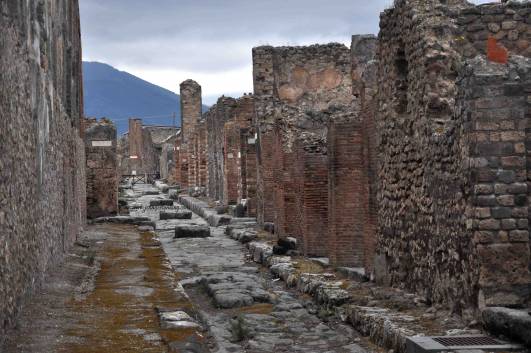A pyroclastic flow emitted by Mt. Vesuvius instantly killed the people of Pompeii in 79 AD.
Within a matter of minutes, the town would have been buried under raining ash, preserving the evidence for us to explore today.
How the people of Pompeii died
The mystery of Mt. Vesuvius and its eruption in 79 AD is one that has intrigued me ever since a middle-school field trip to Pompeii and Herculaneum when I was 11 years old.
To this day, visitors to the ancient city of Pompeii can see haunting plaster casts of the volcano's victims caught in all manner of strange poses.
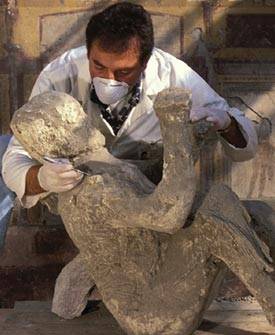
However, when the nearby Roman town of Herculaneum was discovered, archaeologists only found charred remains of its citizens' skeletons - many with their skulls cracked open.
Until recently, no-one was sure why the remains were so different.
Then, the volcano at Mount St. Helens in Washington state exploded in 1980. This documented eruption helped reveal the secret of what happened at Vesuvius centuries earlier.
What happend to Herculaneum and Pompeii
Herculaneum was a smaller and wealthier town than Pompeii. It was a quiet resort where wealthy Romans would come with their armies of slaves, to relax and be pampered.
When Vesuvius first erupted in 79 AD, the event didn't take the inhabitants of Herculaneum by complete surprise.
There must have been earthquakes and tremors leading up to the eruption, and inhabitants would have been well-drilled in where to run for safety in case of an earthquake.
When the volcano actually erupted, a column of gas, ash and molten debris was ejected straight up into the air.
Known as pumice, the debris would have rained down on both Herculaneum and Pompeii like ashy snow.
This part of the volcanic eruption is known as the Plinian phase.
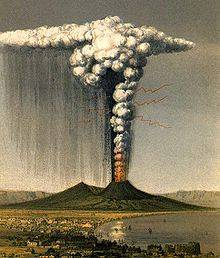
What actually killed the citizens of Herculaneum was the second phase of the eruption - the Peléan phase.
This is when the column of volcanic material shooting up into the air collapsed under its own weight, rolling down Mt. Vesuvius and across the land at around 140mph.
This volcanic material was essentially a cloud of hot gas, steam and tiny fragments of molten rock, collectively known as a pyroclastic flow.
By the time this pyroclastic flow reached Herculaneum, its temperature had 'cooled' to 500°C - hot enough to not only kill the inhabitants of Herculaneum as they hid from the eruption, but also enough to incinerate their flesh instantly, leaving only their bones to fossilise.
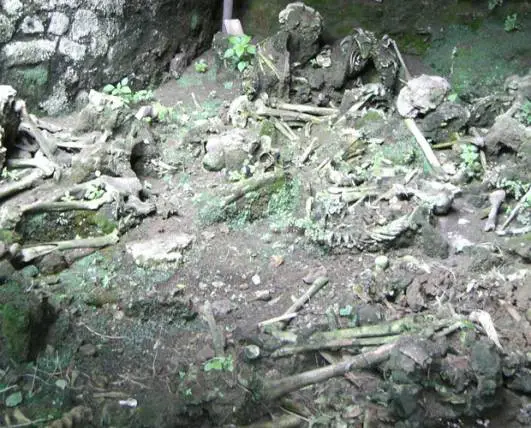
In fact, the helpless victims were exposed to such incredible heat that their brains cooked and burst inside their heads - which is why many of the skulls found at the site in Herculaneum appear to have been smashed, as if by a fierce hammer blow.
Why the bodies in Pompeii are different
By comparison, the people of Pompeii were actually rather fortunate. Being several miles further away from Vesuvius, a majority of the citizens managed to flee.
In fact, many of the people killed in Pompeii are thought to have returned because they assumed it was safe.
This is because the pyroclastic cloud that swept over Herculaneum lost momentum and died out before it reached Pompeii.
It took several further explosions till a pyroclastic flow with enough force to reach Pompeii was emitted.
When the super hot steam, gas and debris rolled into Pompeii, it would have been slightly cooler than the one that struck Herculaneum. Scientists estimate that temperatures in this flow would have reached around 300°C by the time it arrived at the city walls.
Whist this was certainly hot enough to kill everyone in its path, the bodies at Pompeii weren't incinerated in the same way as the ones in Herculaneum.
Instead, the victims were "cooked" instantly - with their flesh remaining intact. This is the reason their fossilised remains look more fully-formed than the skeletons that were found in Herculaneum.
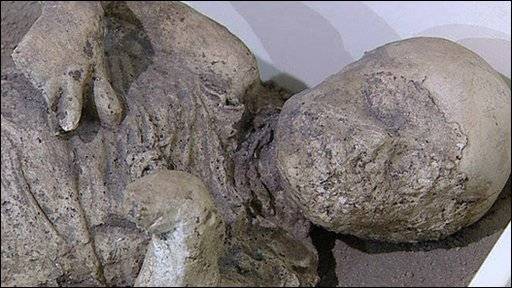
The contorted poses of the victims at Pompeii would probably have been caused by muscle spasms, final throes as the bodies were exposed to the fatal heat of a pyroclastic flow.
Millions of tons of ash and pumice rained down on the area for days, burying the bodies immediately. This is why the remaining fossils are so well preserved - and why we can still marvel at them and learn from them today.
